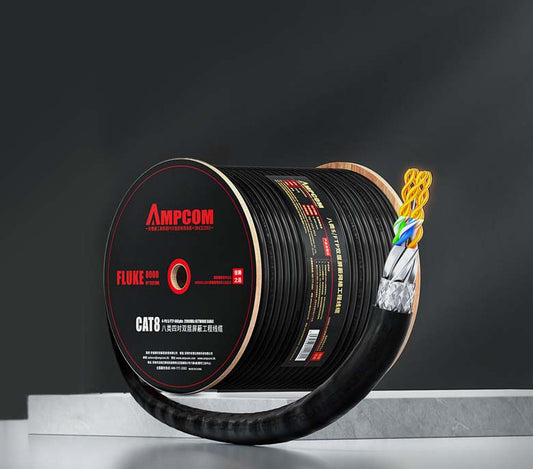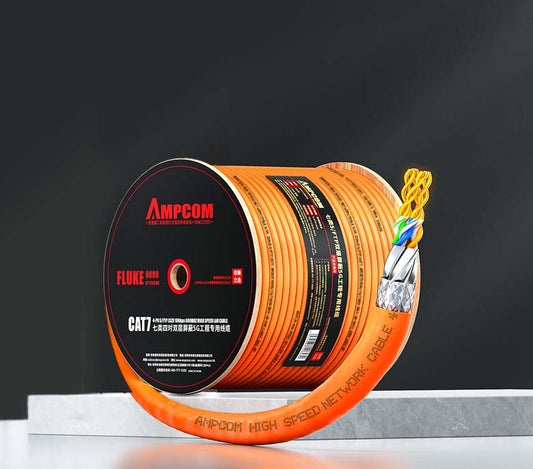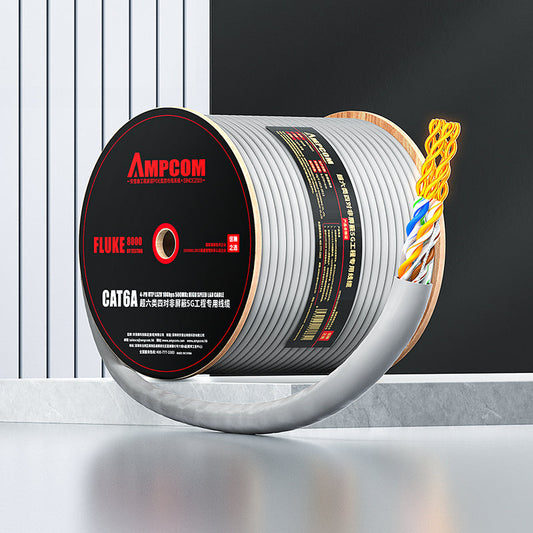How to Avoid Costly Network Cable Mistakes: A Complete Guide for Smart Business Procurement
Optimize your business's network setup with the right network cables. Learn how to choose the best network cables for improved bandwidth and performance.
Why Network Cables Matter for Your Business
Network cables are a critical component of any business infrastructure. They are responsible for transmitting data between devices, ensuring smooth operations and efficient communication. When selecting network cables, businesses must consider factors like bandwidth requirements, cable types, and future scalability.
The right network cables can help prevent issues like signal loss, slow internet speeds, and connectivity failures, all of which can impact your productivity and bottom line.
Types of Network Cables
There are various types of network cables available, each designed for specific use cases. Understanding the differences can help you choose the right one for your business. Below is a comparison table of some of the most common types:
| Cable Type | Speed | Bandwidth | Distance | Use Case | Application |
|---|---|---|---|---|---|
| Cat5e | Up to 1Gbps | Up to 100MHz | Up to 100 meters | Basic networking (home/small business) | Low to moderate network demands |
| Cat6 | Up to 10Gbps (short distance) | Up to 250MHz | Up to 100 meters | Video conferencing, large file transfers | Medium to high network demands |
| Cat6a | Up to 10Gbps | Up to 500MHz | Up to 100 meters | High-performance networks (data centers) | For businesses with higher performance needs |
| Cat7 | Up to 10Gbps | Up to 600MHz | Up to 100 meters | High-speed, high-performance networks | For high-demand industrial networks |
| Cat8 | Up to 40Gbps | Up to 2000MHz | Up to 30 meters | Ultra-high-speed for data centers | For high-performance environments |
| Fiber Optic | Up to 100Gbps | N/A | Up to 40 km (Single-mode) | Long-distance, high-demand networks | For businesses with high data demands |
| Coaxial Cable | Up to 10Gbps | Up to 10Gbps | Up to 100 meters | Internet, TV connections | For moderate internet and TV needs |
How to Choose the Right Network Cable for Your Business
Choosing the right cable depends on several factors. Here are the key considerations to keep in mind:
1. Determine Your Bandwidth Needs
Your network's bandwidth is one of the most critical aspects to consider when selecting a cable. Bandwidth determines how much data can be transmitted at any given time. Businesses with high bandwidth needs (e.g., video conferencing, large file transfers) should invest in cables that can handle higher speeds. For example, fiber optic cables provide exceptional bandwidth for high-performance networks.
2. Consider Cable Length and Installation
The distance between network devices plays a role in cable selection. Longer cable runs may require cables with lower signal loss. In these cases, a Cat6 cable or higher will help minimize signal degradation over long distances.
3. Understand Future Scalability
When purchasing network cables, always think about future expansion. It's best to invest in cables that can support faster speeds and higher capacities as your business grows. Choosing a higher-grade cable today can save you from needing to replace it in the future as your bandwidth demands increase.
Common Network Cable Issues and How to Avoid Them
When dealing with network cables, businesses may encounter various issues that can disrupt performance. Some common problems include:
- Signal Interference: Poorly shielded cables can experience interference from electrical equipment or other cables. To minimize interference, choose cables with shielding such as shielded cables.
- Insufficient Cable Quality: Low-quality cables can result in slow speeds and data loss. Always select cables from reputable brands to ensure the best performance and reliability.
- Improper Cable Installation: Incorrect cable installation can lead to connection issues. Ensure cables are properly routed, and avoid placing them near heat sources or in areas with excessive bending.
By choosing high-quality cables and ensuring proper installation, you can avoid most of these issues and maintain a robust network.
FAQ
1. What is the difference between Cat5e and Cat6 cables?
Cat6 cables offer faster speeds and greater bandwidth than Cat5e cables. They are ideal for businesses that require high-speed internet and data transfer, such as for video conferencing or large file sharing.
2. Can I use fiber optic cables in place of Ethernet cables?
Yes, fiber optic cables provide higher bandwidth and faster speeds compared to Ethernet cables. However, they may be more expensive and require specialized installation, making them more suitable for businesses with high data demands.
3. How long can network cables be before signal degradation occurs?
Ethernet cables like Cat6 can typically reach up to 100 meters before signal degradation becomes noticeable. For longer distances, consider using fiber optic cables or network extenders.
4. How do I know which type of cable is best for my business?
The best cable depends on your business’s needs. If you require high-speed data transfer and large bandwidth, fiber optic cables or higher-grade Ethernet cables (e.g., Cat6 or Cat7) are recommended. For general office use with less demand, Cat5e or Cat6 might be sufficient.
5. What is the difference between shielded and unshielded cables?
Shielded cables have additional layers of protection against interference, making them ideal for environments with electrical noise. Unshielded cables are typically sufficient in low-interference areas and are more cost-effective.



